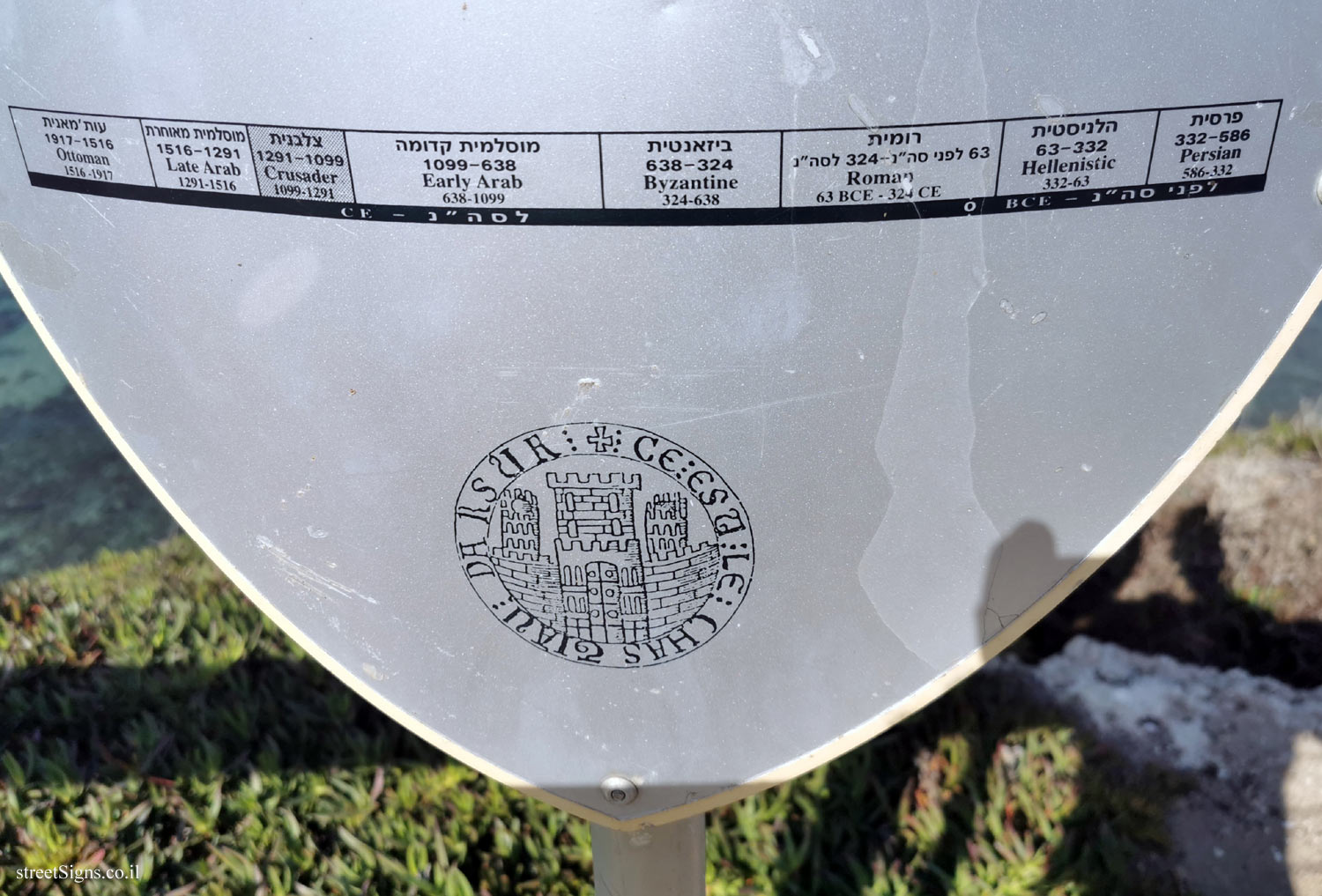A photo taken that day by the same photographer of the bottom of the signs from this series. In the photo you can see the timeline of Apollonia in which the period belonging to the particular sign is emphasized, and the John of Ibelin seal - the Lord ofArsur
 Click for a larger image Translation of the text on the sign
Click for a larger image Translation of the text on the sign:
Apollonia (Tel Arsuf) The Apollonia site is located on a kurkar cliff overlooking a natural mooring.
The site was first inhabited by the Phoenicians at the end of the 6th century BC (Persian period), and was named Arsuf after the god Reshef (god of war and storm). The Phoenicians produced here the color crimson from the crimson snail. In the Hellenistic period (1-4 centuries BC), the inhabitants named the place Apollonia, after the god Apollo, whom they identified with the Phoenician god Reshef. They also produced the color purple.
During the Roman period (1-3 centuries AD) the city grew and developed.
During the Byzantine period (5th-6th centuries AD), the city was called Sozusa and reached its peak. It was about 280 dunams in size, and had facilities for processing agricultural produce, a glass industry and an active anchorage.
In the early Muslim period (7th-11th centuries AD) the city was ruled by the Muslims, who changed its name to Arsuf. The area of the city was reduced to 90 dunams and it was surrounded by a wall.
The Muslim Arsuf was conquered by the Crusaders in 1101 AD, and has since been called Arsur. Following the defeat of the Crusaders at the Battle of Hattin, in 1187 AD, the city passed for four years under Muslim control. At the Battle of Arsuf in 1911 CE, the Crusaders’ control of Arsur and Israel was decided.
The fortress of Arsur was built in 1241 CE and dominated the port. The Crusader Arsur, which was a walled city with a fortress inside it, fell in battle with the Mamluk Sultan Baibars in 1265 AD.
[The following illustrations appear on the sign]
Crimson single thorns
Persian figurine head
Corinthian title from the Byzantine period
Currency from the Early Muslim period
The John of Ibelin seal - the crusader Arsor’s senior
Diagram of the rulers of Apollonia on the timeline
[And at the bottom of the sign]
The John of Ibelin seal - the crusader Arsor’s senior
Learn about:

 Click for a larger image
Click for a larger image